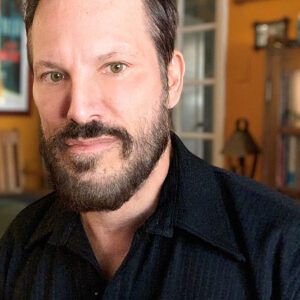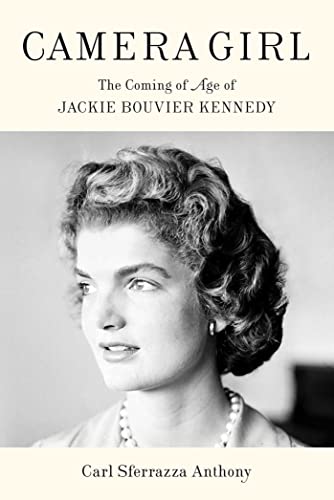Camera Girl, the Coming of Age of Jackie Bouvier Kennedy by Carl Sferrazza Anthony
Jacqueline Kennedy was so poised, stylish, and cultured that one might imagine she sprang into existence, fully formed, in July of 1929.
In fact, baby Jacqueline arrived just a few months before the famous Wall Street Crash, but diminished family wealth was not the only reason that her first 24 years were a tug of war with her parents.
In the bittersweet Camera Girl, the Coming of Age of Jackie Bouvier Kennedy, author and First Ladies expert Carl Sferrazza Anthony dives into the story of the 35th First Lady from her birth to her marriage to the handsome, ambitious Senator John F. Kennedy.
Jacqueline Lee Bouvier was the first daughter of Janet Lee and John Vernou Bouvier III (known as “Black Jack”), an incompatible Jazz Age couple that could have been conjured by F. Scott Fitzgerald.
The author superbly evokes Janet’s tyrannical personality. Embittered by her husband’s infidelity, unappeased by a second marriage which brought the financial stability and status she craved, Janet sought complete control over her daughter’s life.
With remarkable detail, Anthony shows us why Jackie was both likely and unlikely to become one of the world’s most admired and respected women. His portrait of her before she became “Jackie” demonstrates that her serene, sophisticated persona was not a performance. Unlike so many celebrities, she remained true to herself: her diverse interests and soft-spoken manner developed early on and never changed.
Therefore, it is surprising to learn that despite privilege, beauty, and education, Jackie struggled to find her way. It was only as a “camera girl”—a college student touring Western Europe armed with a Leica and, a few years later, an inquiring photographer for the Washington (D.C.) Times-Herald—that she began to gain confidence in her own intellect and dreams.
THE AUTHOR SUPERBLY EVOKES JANET’S PERSONALITY
Increasingly, she managed to sidestep her mother, forging offbeat friendships and defying postwar social norms. A voracious reader, Jackie expanded her knowledge of history, literature, art, and current events at a prodigious pace, and cultivated highbrow passions for travel, ballet, horses and more. These, too, were avenues to independence.
Camera Girl contains several revelations. There is the likelihood that Jackie was expelled from Vassar for violating a curfew with a boy from Yale. There were Jackie’s maternal grandparents and great-grandparents, Irish immigrants who scraped by on Manhattan’s Lower East Side—family history that an embarrassed Janet covered up by saying she descended from “the Lees of Virginia.” And there was Black Jack, confined largely to his Upper East Side apartment during the last decade of his life, wrestling with depression and alcoholism.
Jackie navigated between her parents, doggedly pursuing a career as a writer. It was not an unrealistic goal. She wrote deft, creative prose which she paired with amusing sketches. The Times-Herald published a few of her features but the editor remained wary of committing to a young woman who, despite protests to the contrary, might be secretly hoping to marry and settle down.
Indeed, Jackie did want to fall in love. In May of 1951, she met Congressman John F. Kennedy at a Georgetown dinner party. Although she found him obsessed with politics, the two clicked and dated sporadically during the next year when Kennedy ran for the Senate.
While he continued to see other women, Jackie managed to meet and win over Joseph P. Kennedy, Sr., who was hard at work shaping his son’s image as a potential presidential candidate and regarded her as an asset.
A FASCINATING STORY
Historians have long debated President Kennedy’s lifelong “sexual compulsion,” as Anthony labels it, and inability to remain monogamous. Well before the couple announced their engagement, Jackie was aware that Kennedy frequently strayed. In this way her marriage echoed that of her parents.
Jackie’s new father-in-law made certain that the wedding was the social event of 1953, inviting 750 to the church ceremony and 1,200 to the reception. Jackie wanted a simple dress, but Joe Sr. insisted on a beribboned ball gown. He strong-armed everyone.
But after the party, Jackie created her own world and never had to explain herself again. At an early age she had developed the habit of “surveying the scene with a kind of detachment,” Anthony writes, a trait she shared with her husband. It was this coolness that got her through triumph and tragedy.
In Camera Girl, Carl Sferrazza Anthony diverges from the relatively obscure Presidential wives who were his previous biographical subjects: Ida McKinley, Helen Taft, and Florence Harding.
Here the author offers readers a fascinating story and insight into an iconic twentieth-century woman whom we thought we knew quite well.

About the author:
Carl Sferrazza Anthony is the author of a dozen books about presidents’ wives and families, including As We Remember Her: Jacqueline Kennedy Onassis in the Words of Her Family and Friends; The Kennedy White House: Family Life and Pictures, 1961–1963; and the two-volume First Ladies: The Saga of the Presidents’ Wives and Their Power, 1789–1990. He has served as guest curator for presidential library exhibits, written for numerous national publications, and served as contributing editor to the late John F. Kennedy, Jr.’s George magazine.
Buy this Book!
Amazon



